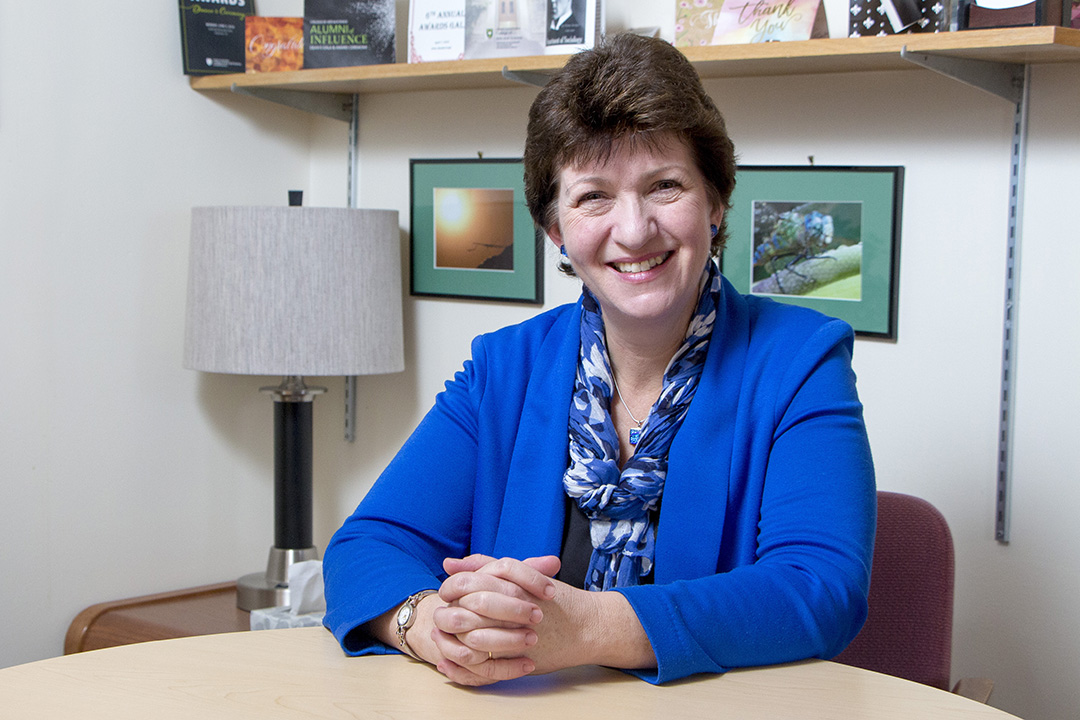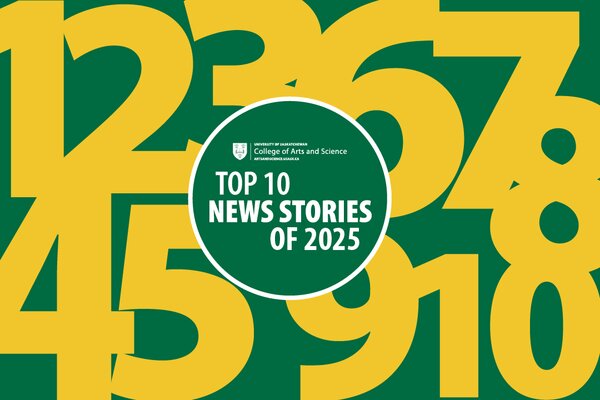
Pickering picked for achievement award
Canada Research Chair Ingrid Pickering caps off a banner year
By Shannon Boklaschuk
It may seem odd, at first, to learn that a geological sciences professor has been honoured for her contributions to health research.
But anyone reviewing the curriculum vitae of Dr. Ingrid Pickering (PhD) will quickly see it makes perfect sense. Pickering, a professor in the College of Arts and Science’s Department of Geological Sciences, has made a difference in human health at home and internationally—from leading the 2009 Training in Health Research Using Synchrotron Techniques (THRUST) program at the Canadian Light Source (CLS), to the co-discovery of the relationship between selenium and arsenic in the Bangladeshi diet.
For these accomplishments, and more, Pickering received the 2018 Achievement Award on Dec. 6, 2018, at the 15th annual Santé Awards Evening held by the Saskatchewan Health Research Foundation (SHRF).
“It’s such an honour,” said Pickering, who was nominated for the SHRF award by scholars and fellow synchrotron scientists at the University of Saskatchewan (USask) and other universities and laboratories.
“It’s very special to be nominated to be awarded in this area, and it’s particularly meaningful because of the people who have nominated me for it. It’s also important because I feel as though I’m receiving it on behalf of a huge group of people,” she said.
THRUST, for example, brings together clinicians and biomedical researchers with experts in synchrotron science to solve pressing health issues and concerns. It is funded through the Canadian Institutes of Health Research, USask and the CLS. To date, nearly 100 graduate students, post-doctoral fellows and research associates have been trained in the program from five USask colleges: arts and science, medicine, engineering, veterinary medicine, and pharmacy and nutrition.
“It is the wonderful cross-disciplinary nature of synchrotron studies,” said Pickering, one of 10 USask researchers to be honoured by SHRF at the Santé Awards Evening. “The studies typically involve people from many different disciplines getting together and, by combining their knowledge, something new comes out of it.”
The SHRF award caps off a banner year for Pickering. In early 2018, she was named the College of Arts and Science’s acting vice-dean research, scholarly and artistic work, for 12 months. She values all she has learned in that administrative position and appreciates “the privilege of being able to interact with people across so many disciplines.”
“I just have really loved it,” said Pickering. “I have so enjoyed the role.”
In June 2018, the Canadian Foundation for Innovation (CFI) appointed Pickering chair of the board of directors for a three-year term, marking the first time a woman has held the role. More good news came in September 2018, when she was named a fellow of the Royal Society of Canada. It is one of the highest honours a scholar can achieve.
In addition to her work with THRUST, Pickering—one of Canada’s most widely cited environmental chemists—has been a member of many other health research teams. In 2005, she led a workshop in Saskatoon that attracted more than 130 researchers and trainees to discuss future directions in understanding the role of trace metals in human health. That resulted in a successful CFI proposal that attained national project status and was supported by 19 institutions across the country, leading to the construction of a $20.6-million CLS beamline.
Pickering has also worked with researchers from around the world, resulting in clinical trials and funding from the Grand Challenges Canada Stars in Global Health program, to investigate whether selenium can help protect people from developing arsenicosis, a condition that can cause skin lesions, cancer and death.
Pickering and her co-workers used synchrotron technology to demonstrate that arsenic and selenium molecules bind together to be safely excreted from the body as waste. Their work suggested that selenium supplements can help prevent arsenicosis in Bangladesh, where more than 50 million people are impacted by arsenic in the drinking water.
Pickering emphasized that much of her scholarly work is done in collaboration with other people, so she shares the SHRF honour with others.
“Any award—you don’t just get it by yourself,” she said. “There’s people who nominated you, people who supported you and people who worked with you. It’s all a team.”
SHRF Awards
Ten USask researchers were honoured by SHRF at the 2018 Santé Awards Evening on Dec. 6:
Achievement Award – Dr. Ingrid Pickering (PhD), Arts and Science.
Impact Award – Dr. Brenna Bath (PhD), Medicine.
Excellence Awards – Dr. Eric Price (PhD), Arts and Science; Dr. Emily McWalter (PhD), Engineering; Dr. Mark Fenton (MD), Medicine; Dr. Renuka Dahiya (PhD), Medicine; Dr. Ornwipa Thamsuwan (PhD), Medicine; Dr. Daniel Chen (PhD), Engineering; Dr. Louise Racine (PhD), Nursing; Dr. Angela Bowen (PhD), Nursing.


